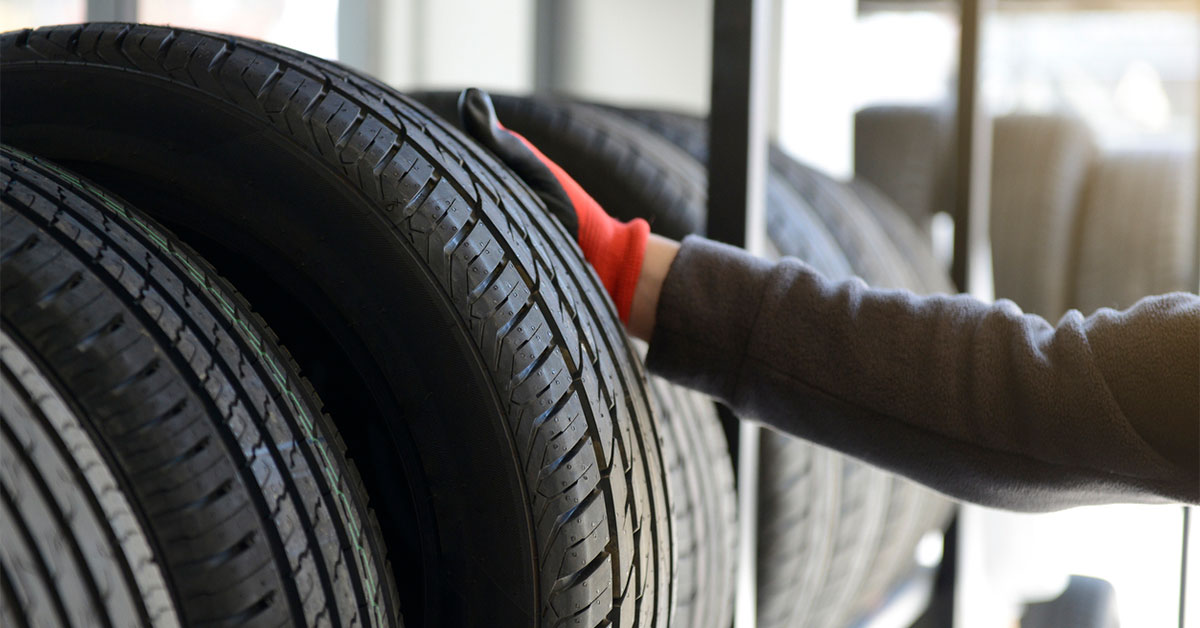Keeping your tires in good shape means that you have to have the proper maintenance regimen for them. That doesn’t necessarily mean making many visits to the shop either. If you learn how to do your own tire checks, rotations and repairs you can save a good amount of money. Simply inspecting them from time to time will help you know what to do to keep them lasting longer. The following are some car hacks that you can perform on your own to keep your tires in good shape:
Checking Tread
You want to check the tread on your tires. Bald tires should be discarded and replaced immediately with new ones. An easy way to check the tread is with the penny test (see image). Insert the penny into the tread groove with the head upside down and facing you. If you can see the entire head, your tread is less than 2/32 inch. This means you need to replace your tire very soon.
If your tires are not bald but are wearing unevenly, you should rotate your tires (see below). Most people simply change up their front tires with their back ones. Front tires wear out quicker than rear ones, so it’s good to rotate them regularly.
Checking Air in Your Tires
Keeping your tires properly inflated is important too. If tires are under-inflated, they will wear out quicker. With too little air in them, tires are also more prone to blowouts (explosive failure). Most people aren’t aware but you also use more fuel when your tires are not inflated to the manufacturer’s specifications (check your owner’s manual). Chances are that unless your car is a much older model, it already has a tire pressure monitor that will alert you to low air levels. But you don’t have to wait for the monitor to go off. Keep your tires filled with just enough air by checking them monthly and keeping them filled according to specifications found in your owner’s manual. Doing this, you’ll quickly detect any slow leaks. Also keep in mind that changes in weather often require a boost of air as hot temperatures will increase tire pressure and cold weather will decrease pressure.
Rotating Tires
You should pretty much be rotating your tires every 6,000 miles or every oil change if it helps you remember to do it. Tires don’t wear evenly, but you can get the most mileage out of the ones you have by rotating them so they last longer. This is an easy and inexpensive way to save money in the long-run. Doing it yourself is not that hard either.
Lifting your car is the most important step you take before you start doing anything else. Most cars come with a jack but you can’t do this one tire at a time. Obviously, you’ll need to get the entire car off the ground, or at least two tires at a time, so you’ll need a set of jack stands.
Safety: Do not try to do this with multiple jacks! You may hurt yourself and your vehicle. Also, do not perform a tire rotation on an incline or decline. You’ll want to be on a very level surface before performing a tire rotation.
Now that you are ready, follow these steps to rotate your tires:
Tools needed: 1 flat-head screwdriver, 1 floor jack, 2 or 4 jack stands, 1 lug wrench
Plan your rotation: Know which type of tire you have, directional or non-directional. You’ll know this by looking at the direction of the tread. Some tires also have an arrow on the side of the tire indicating the direction in which they should go.
Directional tires have grooves that go diagonally and form a V intended to push water out from the center of the tire and provide better traction.
Non-directional tires don’t have these v-shaped grooves, but rather ones that run parallel to the tire itself.
- Before lifting the car, use a flat-head screwdriver and remove the hubcaps if you have them. Using a lug wrench loosen the lug nuts. Do not remove them yet.
- See where the owner’s manual suggests you should place the floor jack to lift the vehicle and proceed accordingly. You only need to raise the car enough to get the tires a couple of inches off the ground. For certain rotation patterns, it will be easier if you have 4 jack stands and lift the entire car off the ground by lifting one corner at a time and placing a jack stand underneath, then rotate tires based on the diagrams. Otherwise, you could get the job done with two jack stands.
- Take off the lugs from each tire as you begin to rotate them. Be sure to keep the lugs in a tray or safe place as to not lose them.
- Rotate tires based on the following diagrams. Follow rotations patterns based on tire type (directional or non-directional), and drive type (front-wheel drive, rear-wheel drive, or 4-wheel drive).
- Place the lug nuts back as you set each tire. Lug nuts should be tightened in a star pattern unless you have only one lug nut, for which you’d use a torque wrench to tighten to specifications. Start off by using your fingers until the nuts stop turning easily (this avoids stripping), then use the lug wrench and tightening each lug a bit more.
- Once you’re all done moving the tires around, prepare to lower the car. Remove each stand by lifting that side with the floor jack enough to take out the stand. Once a stand is out, lower the car slowly and safely. Do this until the car is completely on the ground again.
- Finish tightening each tire’s lug nuts with the wrench. Make sure to tighten them well, guided by specifications in your car manual.
- Put the hubcaps back on, if you have any.
- Check tires for adequate pressure.
Not only do you want to be very careful when doing maintenance tasks on your tires, you want to always be protected against accidents after your wheels are good to go. AIS makes finding the best insurance at the lowest rate easy so you can just pick the plan that is right for you at a price you’re comfortable with. Call (888) 772-4247 for multiple free quotes or just click here and do it all online.
The information in this article was obtained from various sources. This content is offered for educational purposes only and does not represent contractual agreements, nor is it intended to replace manuals or instructions provided by the manufacturer or the advice of a qualified professional. The definitions, terms, and coverage in a given policy may be different than those suggested here and such policy will be governed by the language contained therein. No warranty or appropriateness for a specific purpose is expressed or implied.













